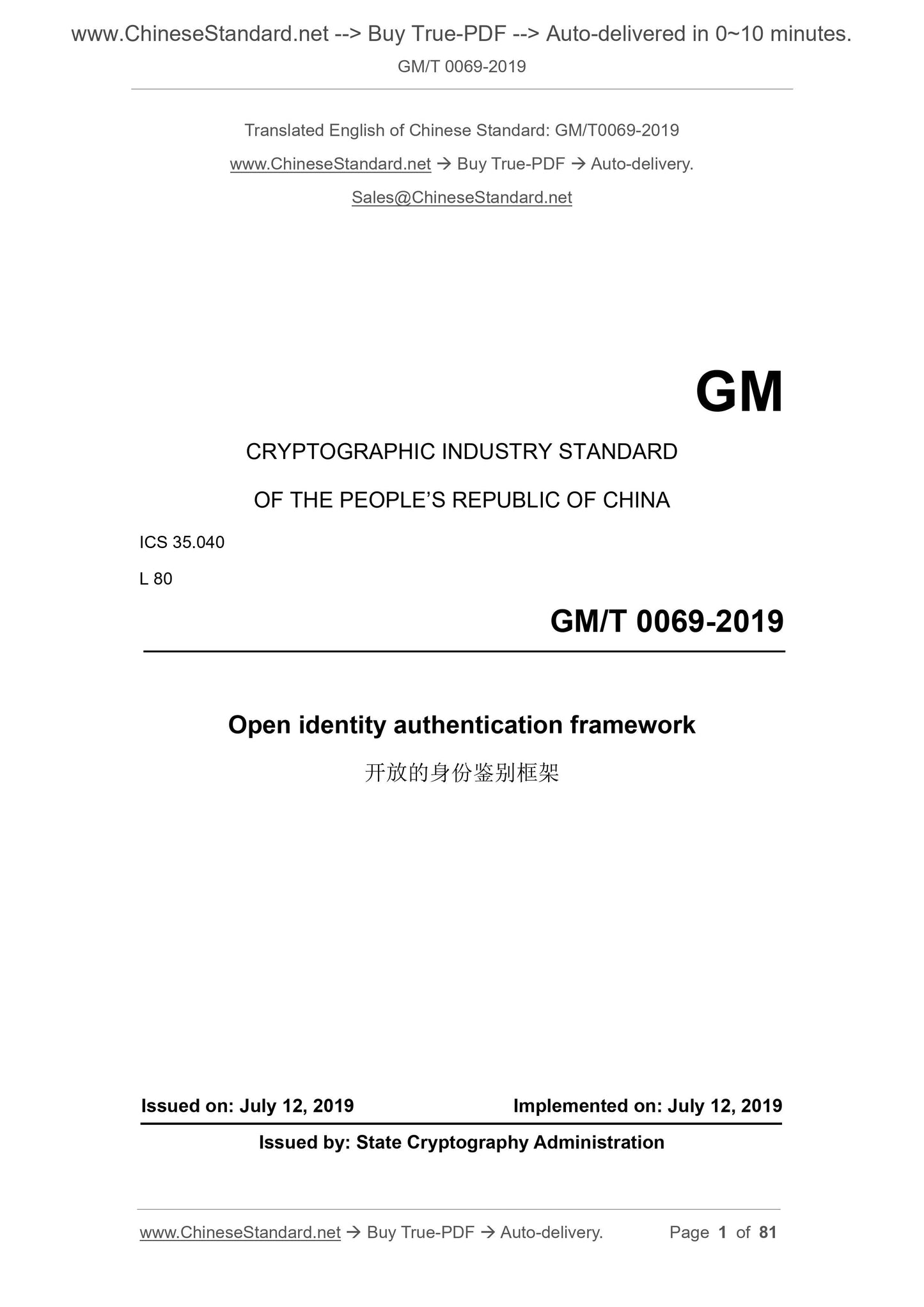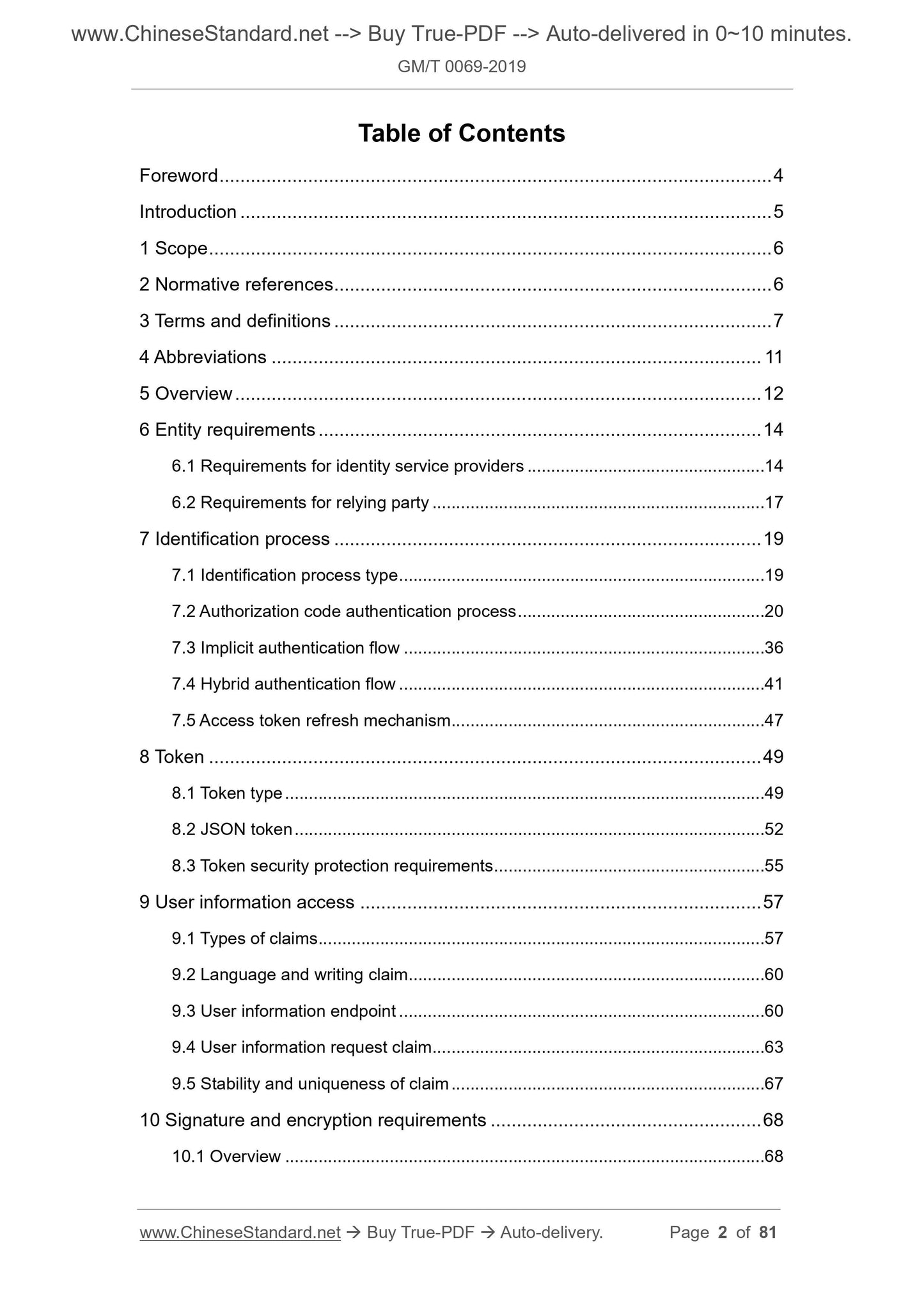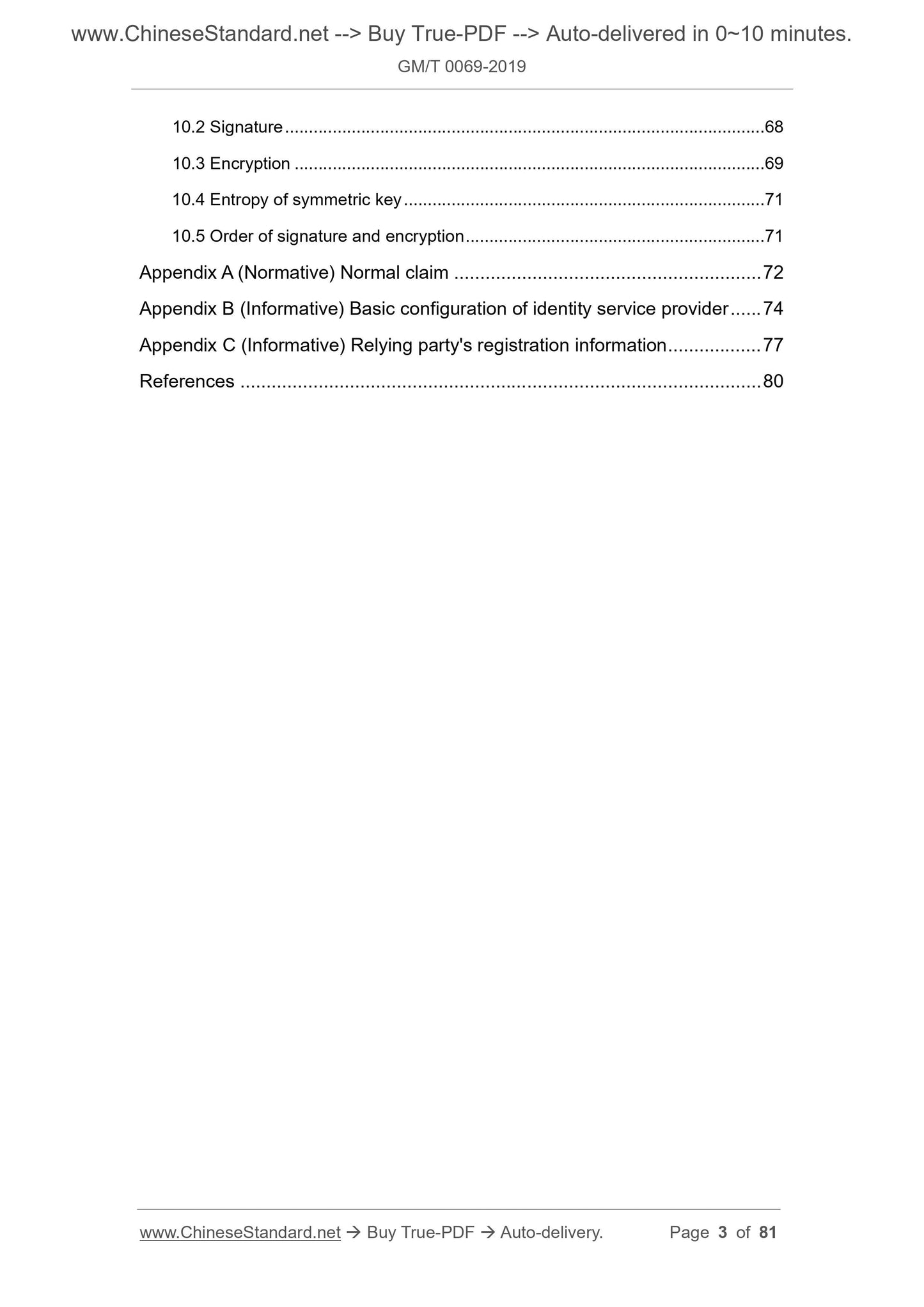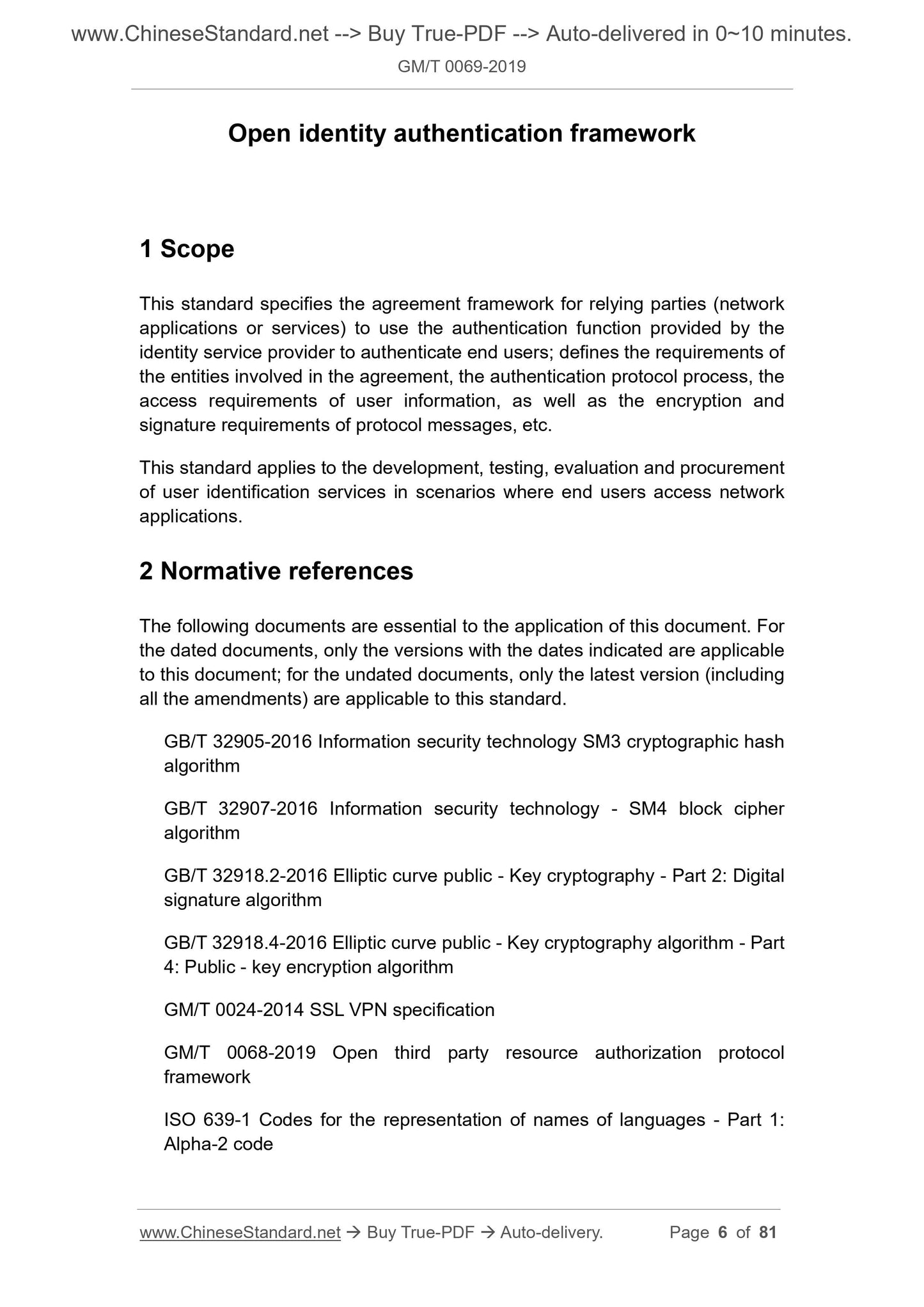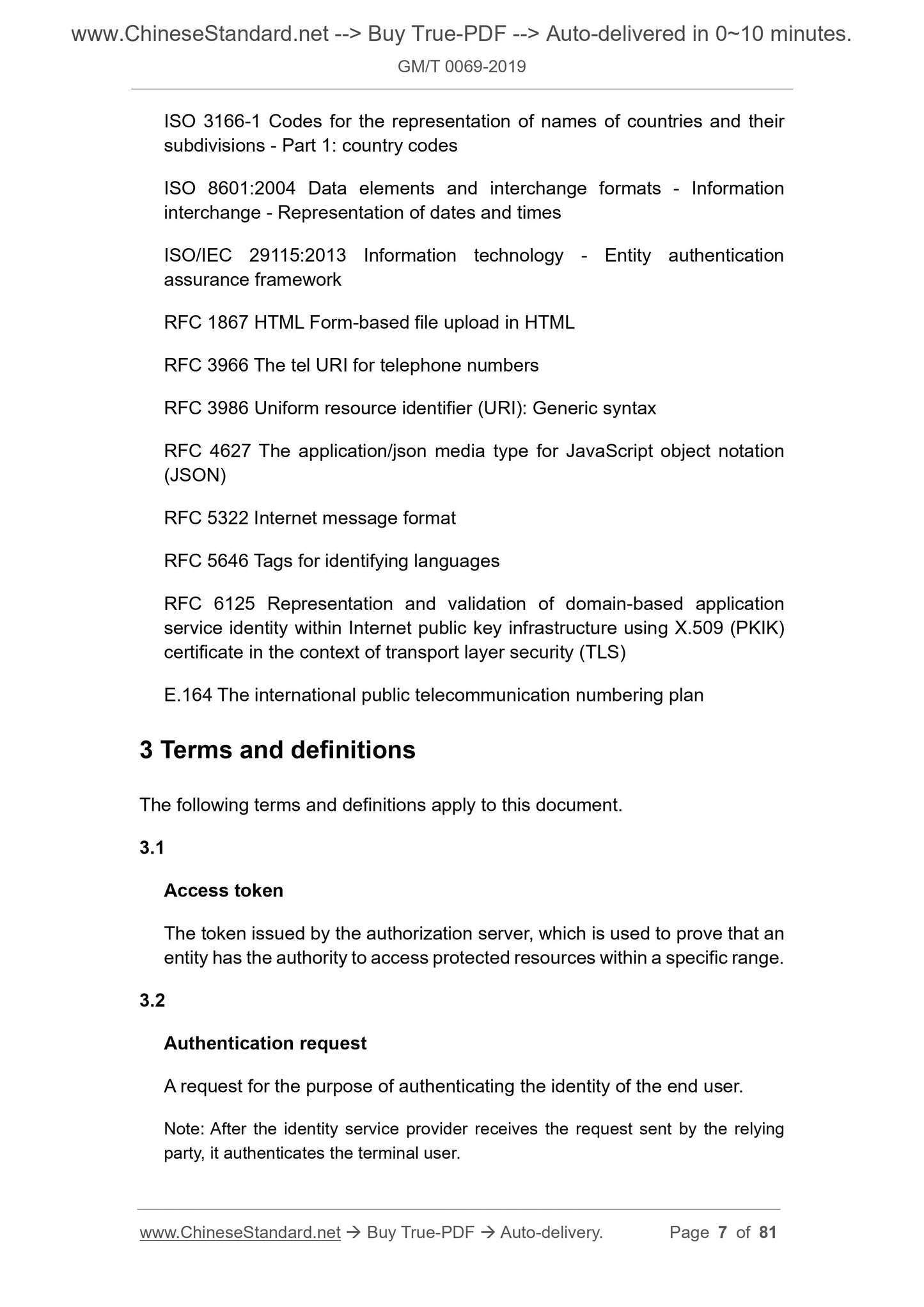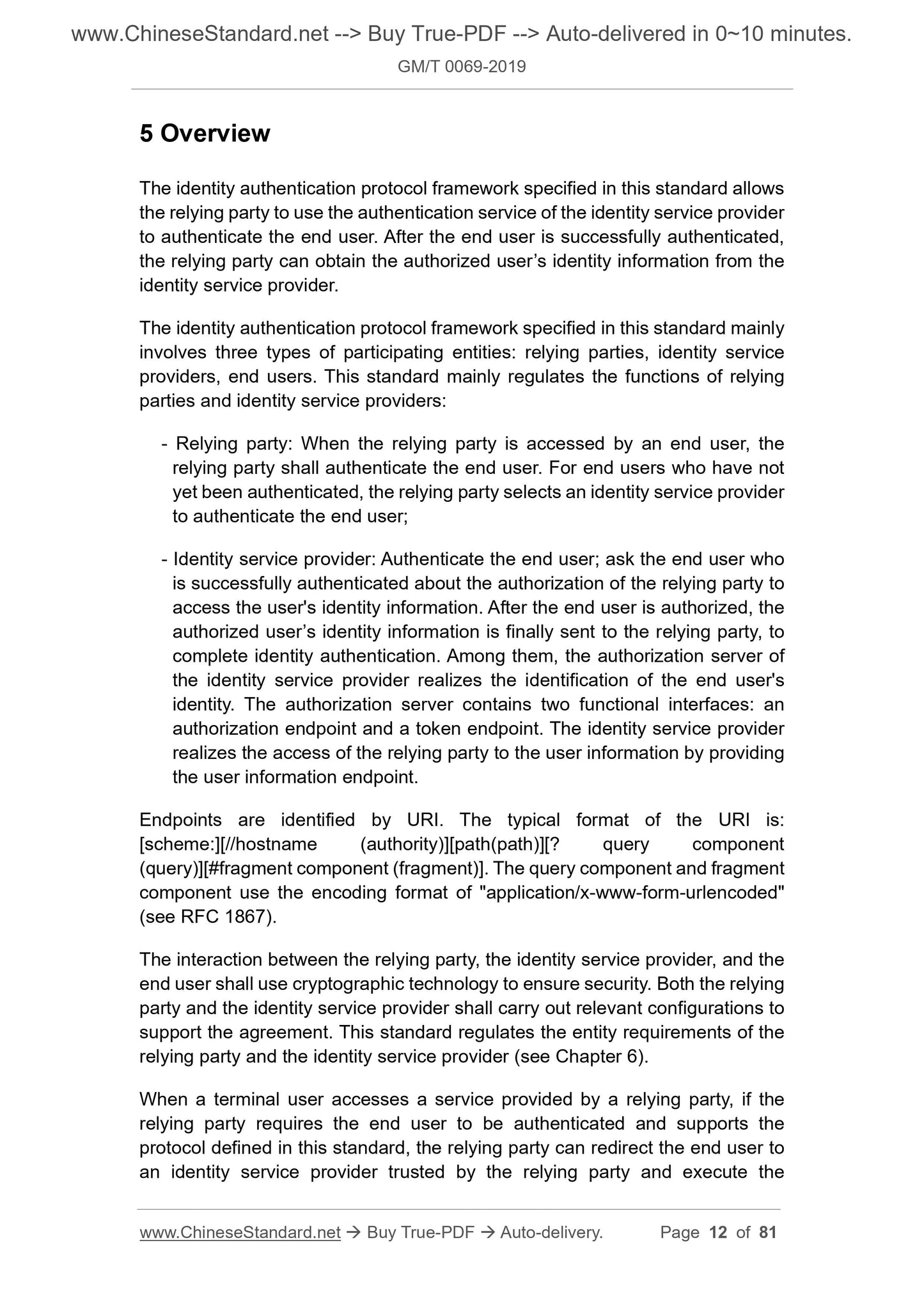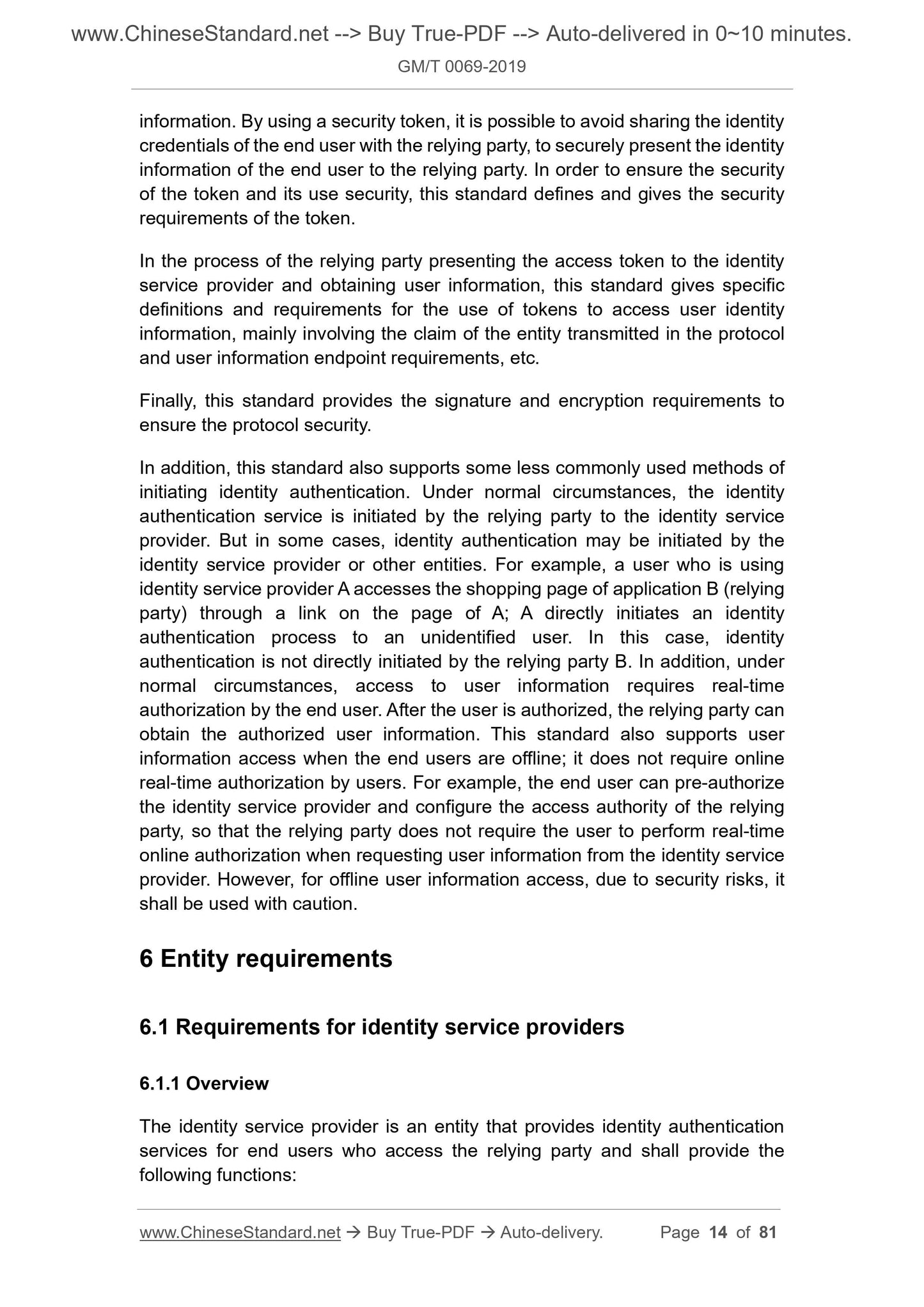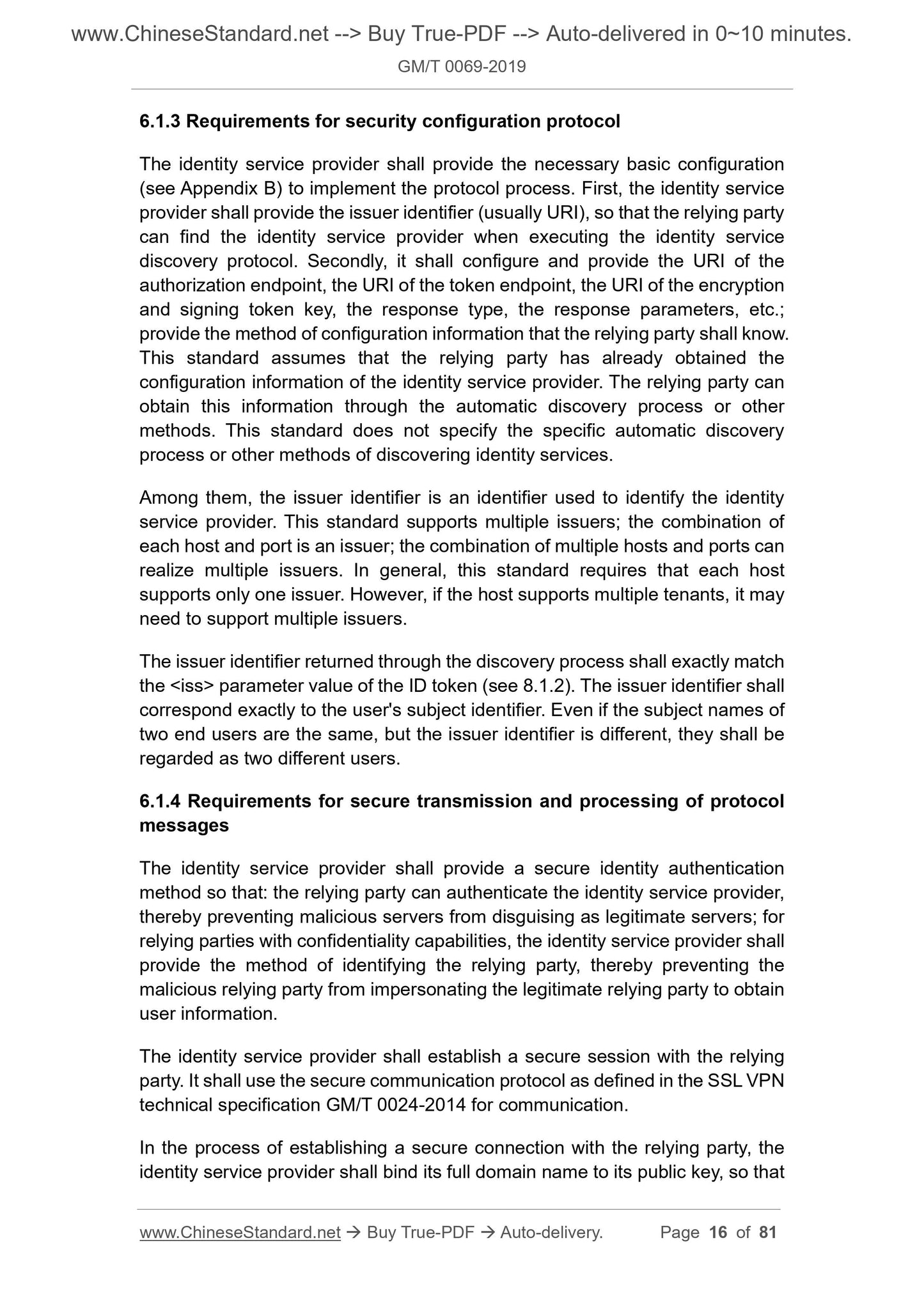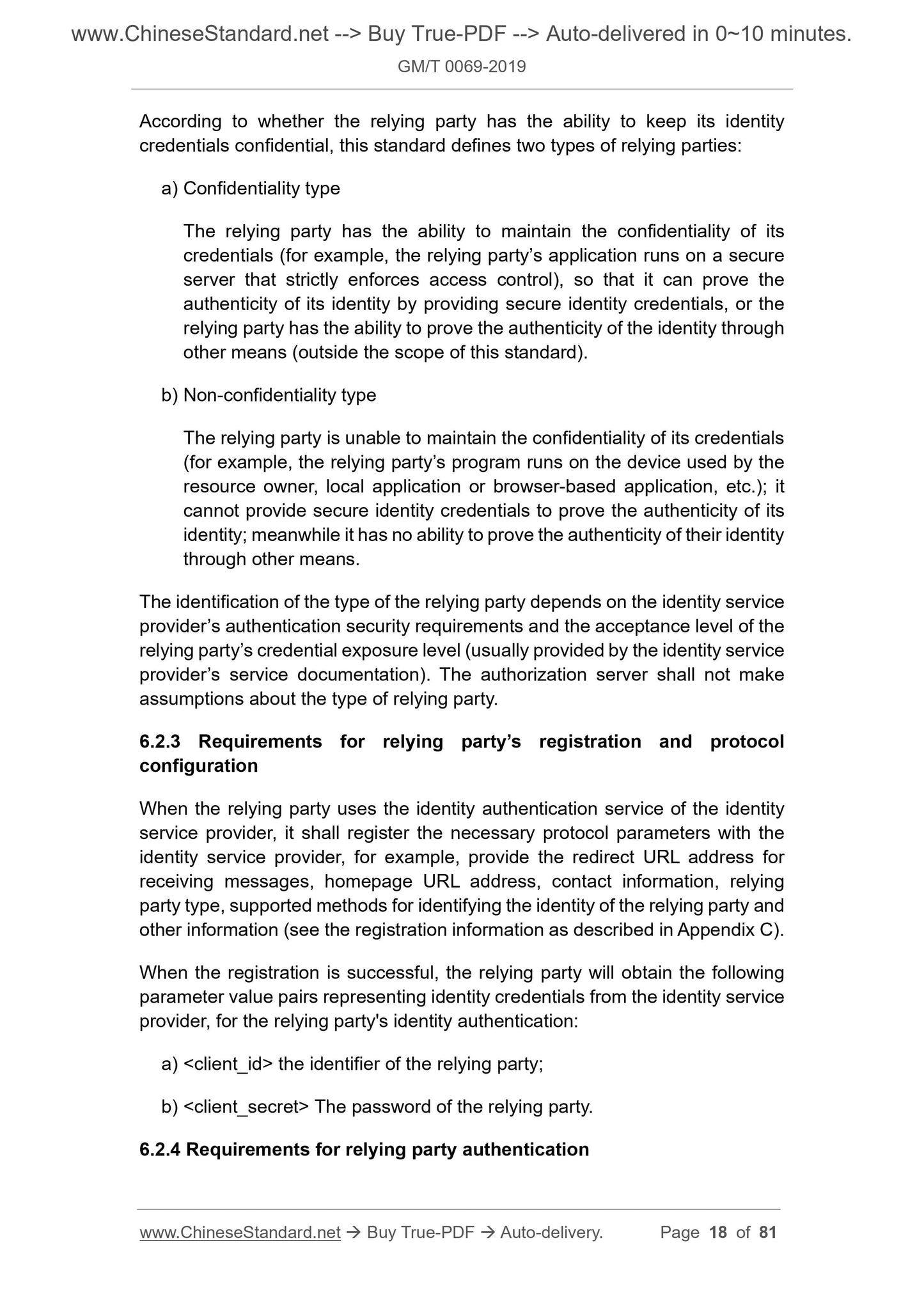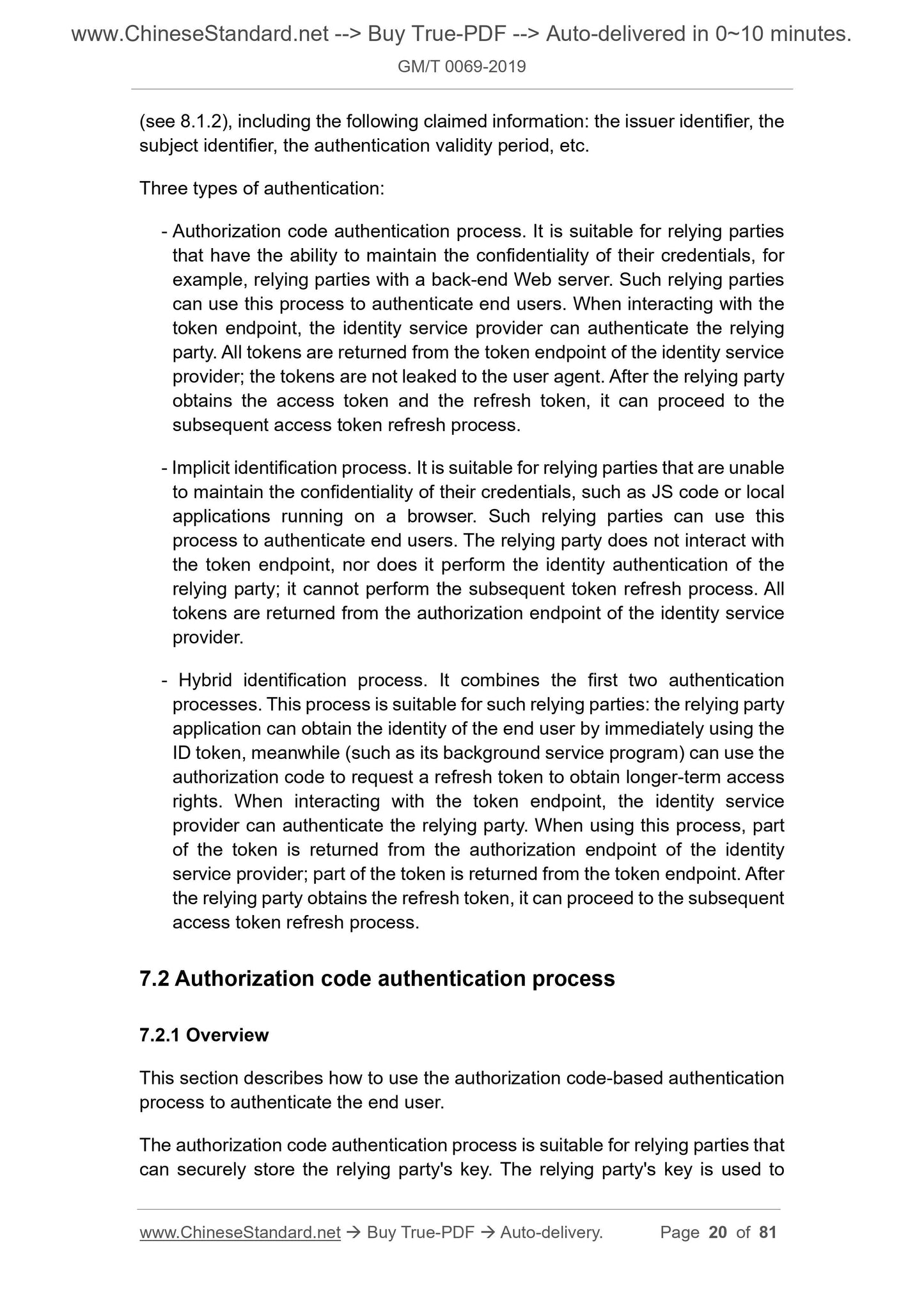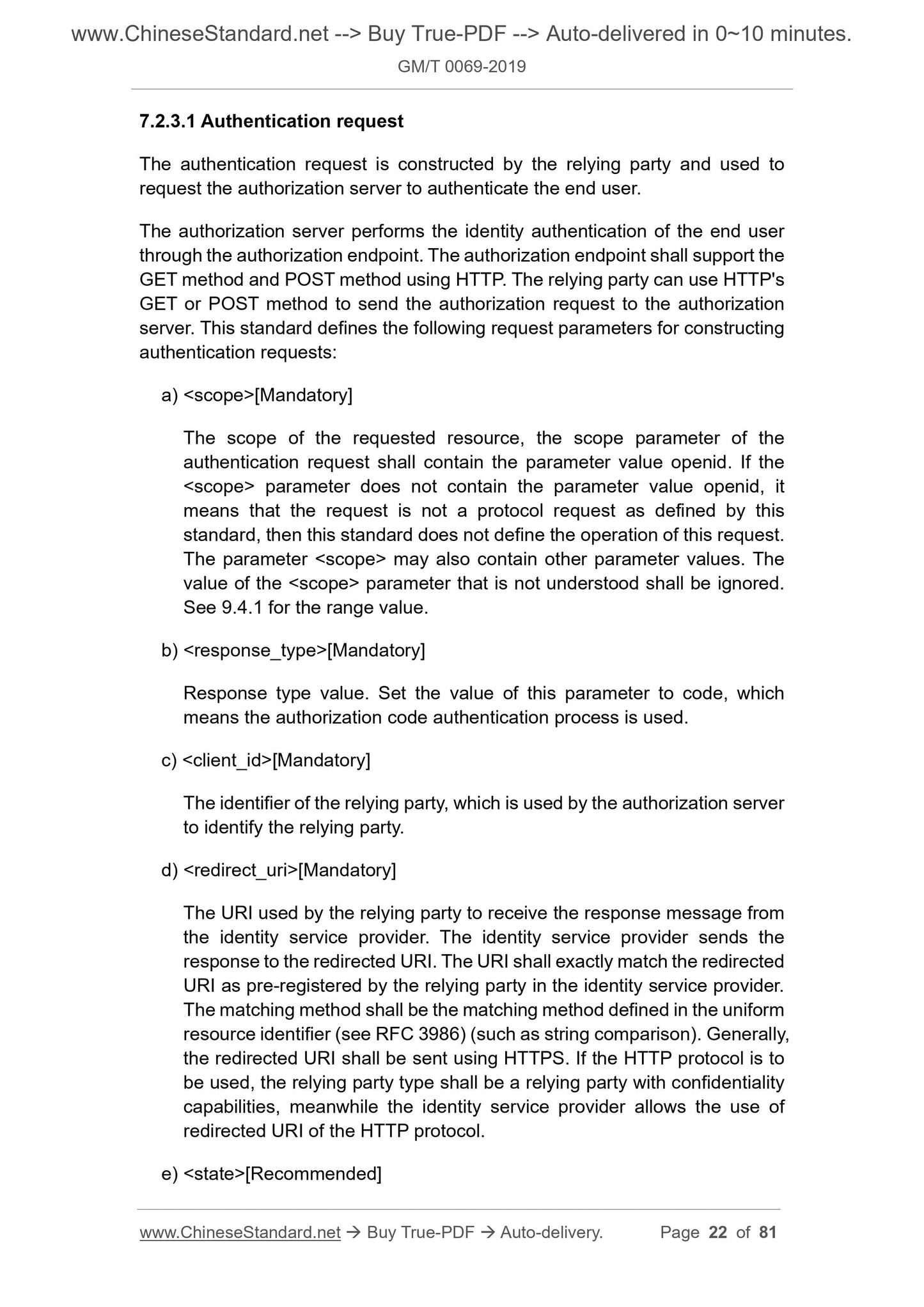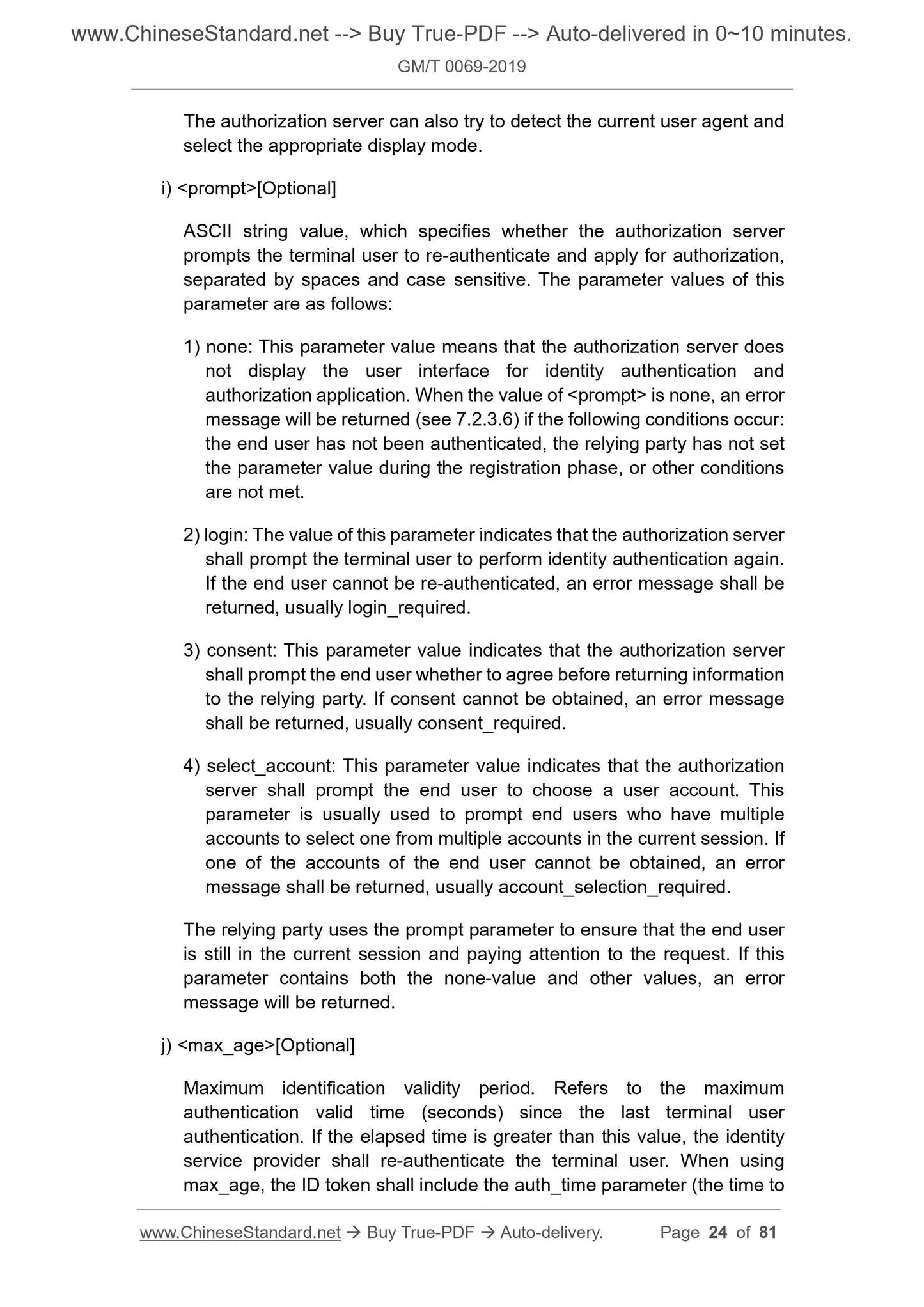1
/
of
12
www.ChineseStandard.us -- Field Test Asia Pte. Ltd.
GM/T 0069-2019 English PDF (GM/T0069-2019)
GM/T 0069-2019 English PDF (GM/T0069-2019)
Regular price
$690.00
Regular price
Sale price
$690.00
Unit price
/
per
Shipping calculated at checkout.
Couldn't load pickup availability
GM/T 0069-2019: Open identity authentication framework
Delivery: 9 seconds. Download (and Email) true-PDF + Invoice.Get Quotation: Click GM/T 0069-2019 (Self-service in 1-minute)
Newer / historical versions: GM/T 0069-2019
Preview True-PDF
Scope
This standard specifies the agreement framework for relying parties (networkapplications or services) to use the authentication function provided by the
identity service provider to authenticate end users; defines the requirements of
the entities involved in the agreement, the authentication protocol process, the
access requirements of user information, as well as the encryption and
signature requirements of protocol messages, etc.
This standard applies to the development, testing, evaluation and procurement
of user identification services in scenarios where end users access network
applications.
Basic Data
| Standard ID | GM/T 0069-2019 (GM/T0069-2019) |
| Description (Translated English) | Open identity authentication framework |
| Sector / Industry | Chinese Industry Standard (Recommended) |
| Classification of Chinese Standard | L80 |
| Classification of International Standard | 35.040 |
| Word Count Estimation | 46,477 |
| Date of Issue | 2019 |
| Date of Implementation | 2019-07-12 |
| Issuing agency(ies) | State Administration of Cryptography |
Share
